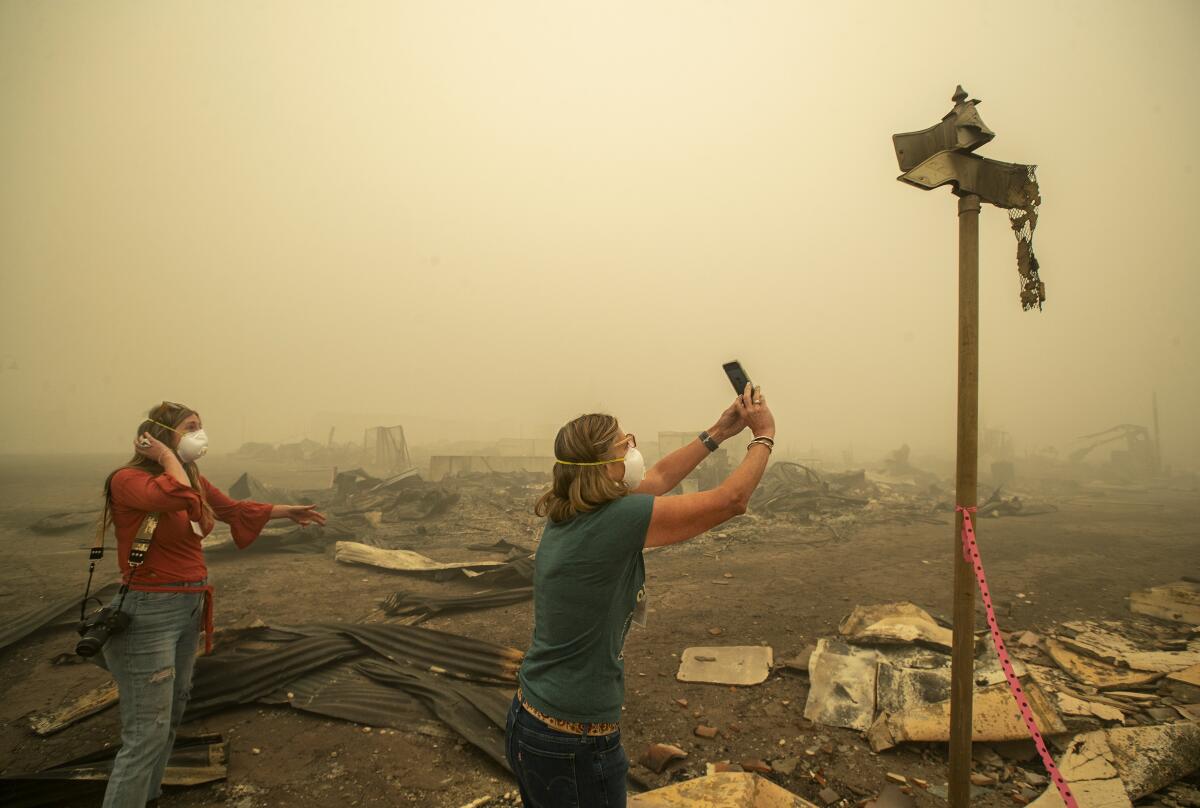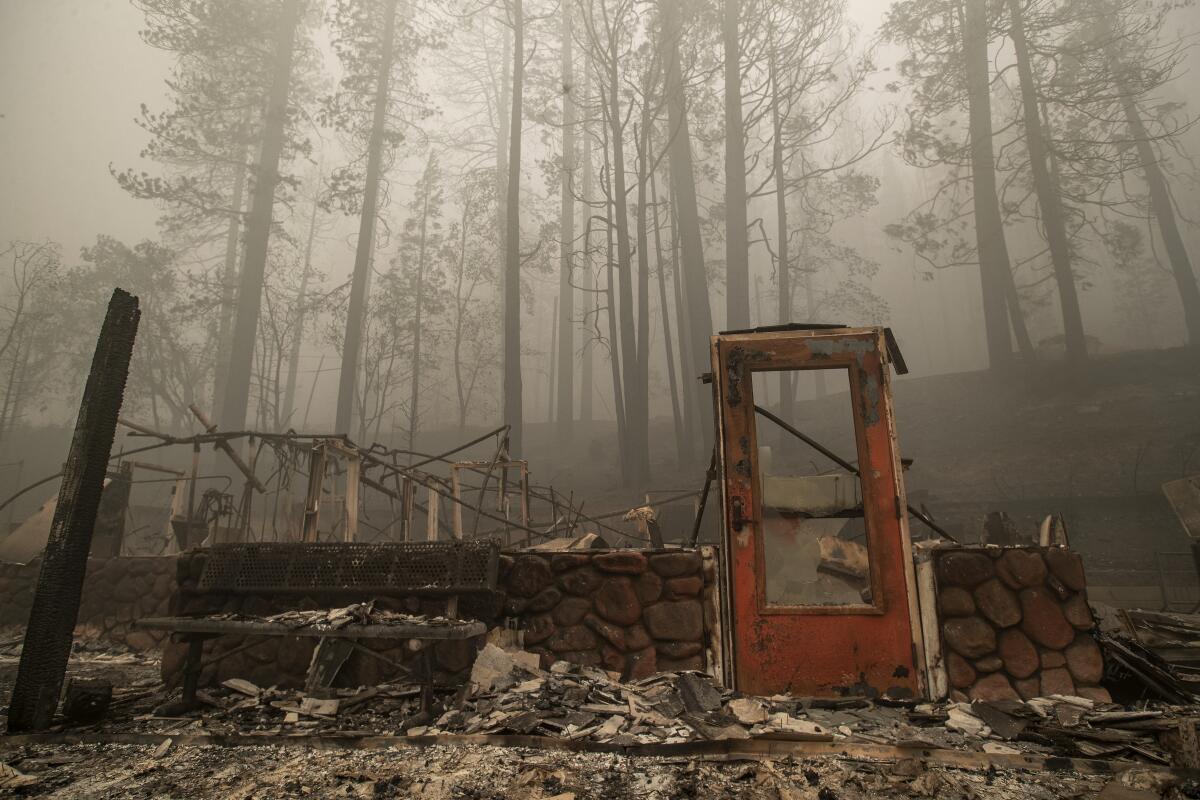More than 550 homes destroyed by Dixie fire, now at over half a million acres

- Share via
The second-largest wildfire in California history now also ranks among the state’s most destructive.
Since igniting in Northern California nearly a month ago, the Dixie fire has leveled the Gold Rush town of Greenville and grown to more than 500,000 acres, destroying at least 1,045 structures in its fiery wake, according to fire officials.
More than 550 structures consumed by the blaze were homes, with the majority being “single residences,” according to the latest incident report.
The blaze — which has scorched Plumas, Lassen, Butte and Tehama counties — is now the 15th most destructive in California history, according to the California Department of Forestry and Fire Protection.
And the threat is far from over, as the fire continues to grow in several directions across rugged terrain. It was 30% contained on Wednesday.
More than 16,000 additional structures are still endangered by the Dixie fire, and firefighters are on high alert in vulnerable communities.
Roughly 32% of the population of Plumas County is under an evacuation order, according to Carly Cabrera, a spokesperson with the county Sheriff’s Office.
“We don’t want another Greenville,” said Edwin Zuniga, a Dixie fire spokesperson with Cal Fire. The town of roughly 1,000 people was reduced to rubble when flames tore through it last Wednesday.
Images of the small town’s destruction shocked the nation.
It’s estimated that 524 structures were destroyed in Greenville alone — including 472 homes and 52 businesses, Cabrera said, citing figures from the California Governor’s Office of Emergency Services.

A week later, personnel were positioned to defend the communities of Westwood and the northern part of the Lake Almanor Peninsula — where the fire is burning just to the north, Zuniga said.
Firefighters are also working to protect Chester, where crews have so far been able to able to stave off flames, according to Zuniga.
The blaze reached the outskirts of Chester, burning outbuildings and other structures, and has caused some damage within the town, he said.
Firefighters patrol populated areas and attempt to squash fire activity wherever it crops up — like when a rogue ember lands on a roof and ignites, Zuniga said.
He said they also put contingency lines around the communities to keep fire at bay.
“We don’t want any more structures to be destroyed,” he said, “we don’t want more people to be displaced by this fire.”
Lassen County has sustained far less damage relative to neighboring Plumas, but the fire recently forced the evacuation of about 2,000 people across three small communities near the county line, including Westwood, according to Lt. Dave Woginrich, with the county Sheriff’s Office.
Several hundred evacuees — including Plumas County residents — are sheltering at centers set up at Lassen Community College and Lassen High School, he said.
Despite avoiding the worst of the Dixie fire so far, Woginrich said Plumas County officials are exhausted from an onslaught of fires plaguing the region for the last two years.
About a month ago, the Beckwourth Complex fire arrived in the southern part of county, tearing through the town of Doyle.
“The winds down there were just howling” at the time, reaching fierce speeds of 50 to 60 mph, Woginrich said.
After dealing with that fire for about 10 days, “we got about a week off,” he said. Then the Dixie fire started creeping into the county.
“People — including in our department — are tired of the fires. We’re tired of evacuating people, putting people on evacuation warnings,” Woginrich said.
“July and August for the last two years, this year and last year, have just been really taxing,” he said.
More to Read
Sign up for Essential California
The most important California stories and recommendations in your inbox every morning.
You may occasionally receive promotional content from the Los Angeles Times.














